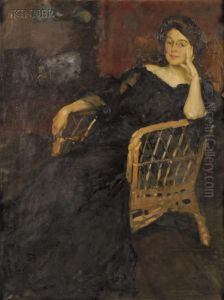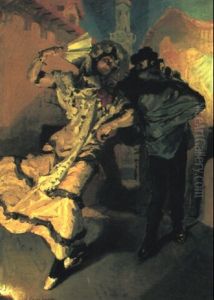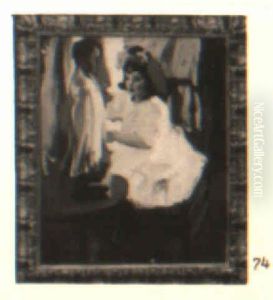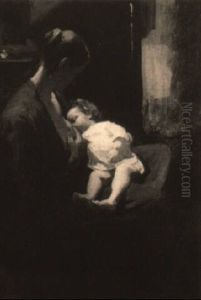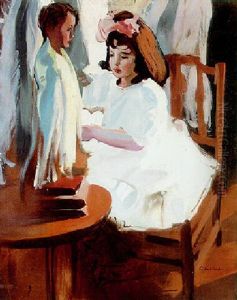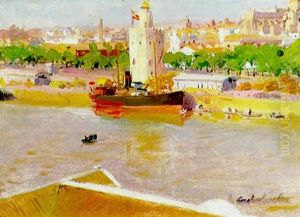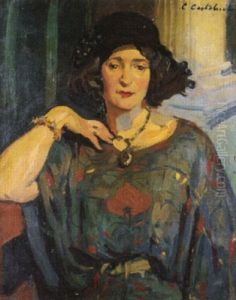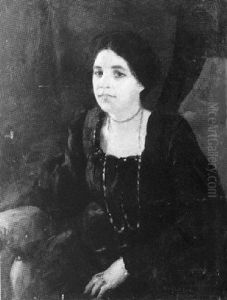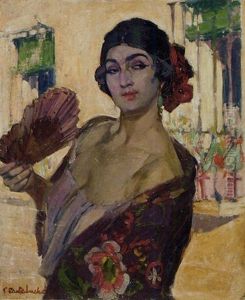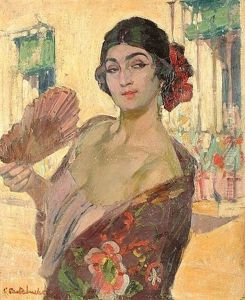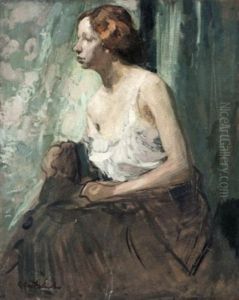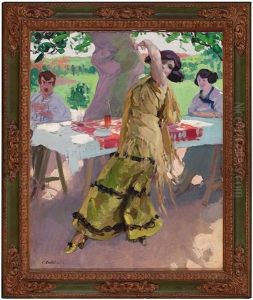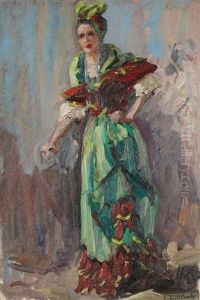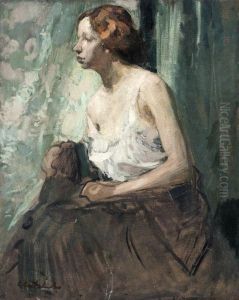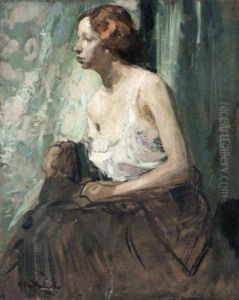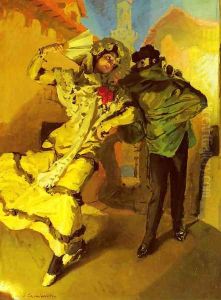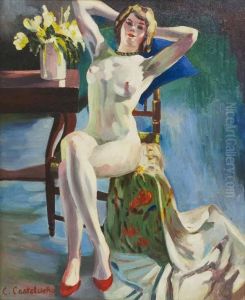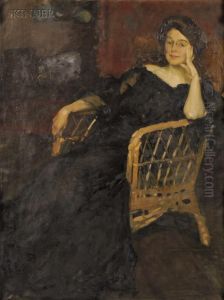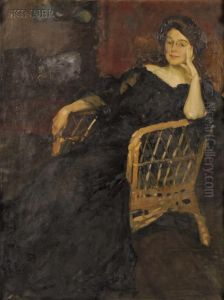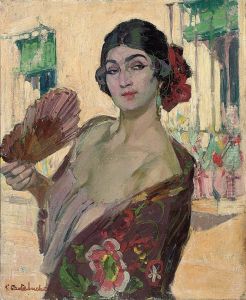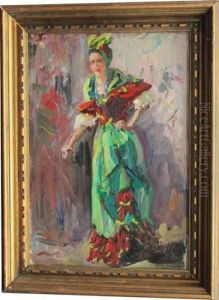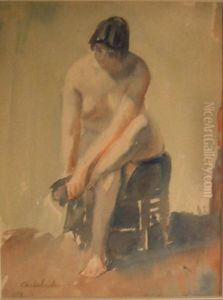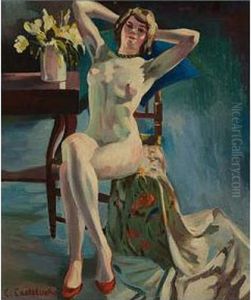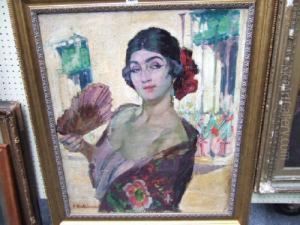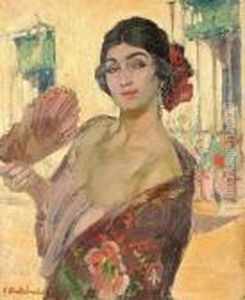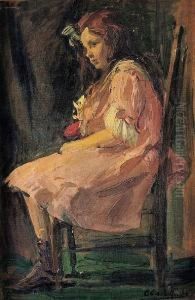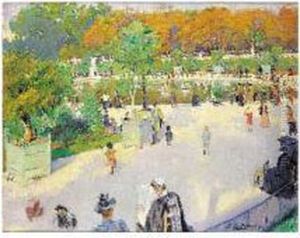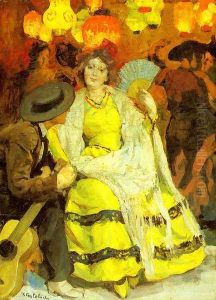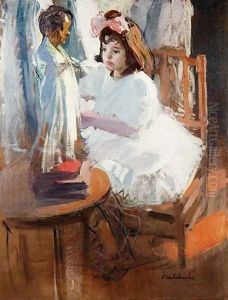Claudio Castelucho Paintings
Claudio Castelucho, born in Barcelona, Spain, in 1870, was a prolific artist known for his contributions to painting and sculpture. His full name was Claudio Castelucho Diana, and he was part of a vibrant artistic movement in Spain that sought to capture the essence of Spanish culture, society, and its people through art. Castelucho's early life was steeped in the rich cultural heritage of Catalonia, an autonomous community known for its distinct identity within Spain. This environment undoubtedly influenced his artistic direction and the thematic focus of his work.
Educated at the prestigious Royal Academy of Fine Arts of San Fernando in Madrid, Castelucho honed his skills under the tutelage of some of Spain's most renowned artists of the time. His academic training provided him with a solid foundation in both the technical aspects of art and the theoretical underpinnings of European artistic movements. After completing his education, Castelucho traveled extensively throughout Europe, a common practice among artists of his era, which allowed them to experience firsthand the diverse artistic styles and cultural landscapes that characterized the continent. These travels significantly influenced his artistic development, introducing him to a broader palette of techniques and philosophical approaches to art.
Castelucho eventually settled in Paris, France, which was then the epicenter of the avant-garde art world. Paris in the late 19th and early 20th centuries was a melting pot of artistic innovation, and Castelucho immersed himself in this vibrant environment. He became associated with the bustling Parisian art scene, engaging with other artists, intellectuals, and patrons. His work from this period reflects the influence of various art movements, including Impressionism and Post-Impressionism, although he never fully abandoned the classical training of his youth. His paintings often depicted scenes of daily life, portraits, and the human form, infused with a sensitivity to light, color, and expression that made his work stand out.
Claudio Castelucho's career was marked by both his dedication to teaching and his prolific output as an artist. He taught at the Académie de la Grande Chaumière in Paris, one of the most prestigious art schools of the time, where he influenced a generation of artists. His approach to teaching was characterized by encouraging students to develop their unique voices, emphasizing the importance of both technical skill and emotional expression in art.
Despite his success and influence in the art world, Claudio Castelucho remains a somewhat enigmatic figure, with his life and work deserving of greater recognition. He continued to paint and sculpt until his death in Paris in 1927. Today, his works are held in private collections and museums around the world, testament to the enduring appeal of his artistic vision. Castelucho's legacy is that of an artist who bridged the gap between the traditional and the modern, capturing the human condition with both the skill of a craftsman and the soul of a poet.
